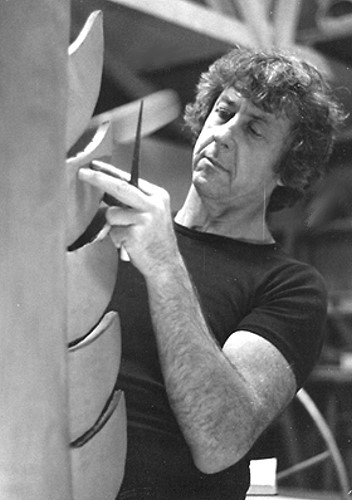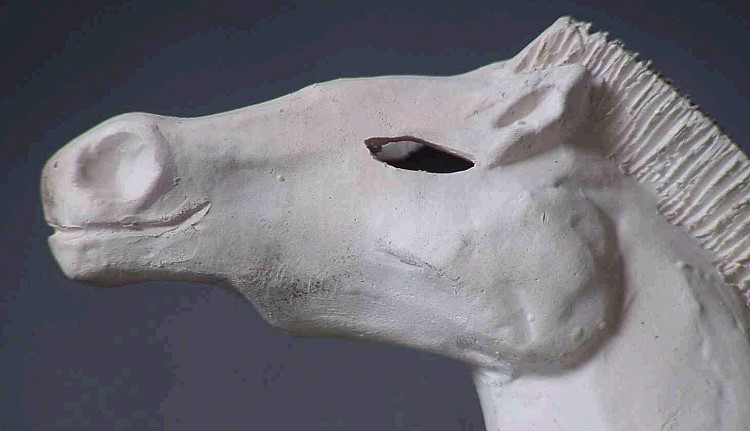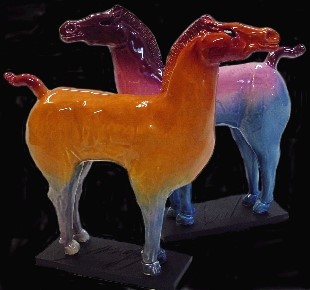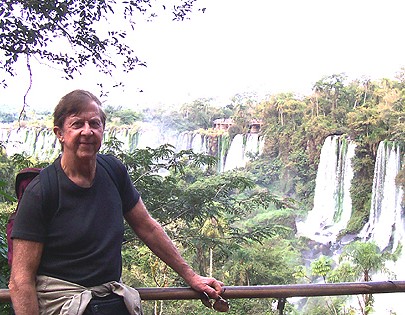| |
| |
| |
| Home Articles Links Museum Galleries |

|  |
| Frank Colson has been creating in the clay medium for over 50 years with great distinction. As a student at Scripps College in California, he studied with Richard Petterson, Paul Soldner and Marguerite Wildenhain, when she was a visiting artist in the early 1950's. After working in the television industry for a couple years, he made the important, life decision to open the Colson School of Art in 1963, which was the first pottery school in Sarasota, Florida. The Colson School of Art has provided excellent instruction over the years with world renowned visiting artists such as Ruth Duckworth and Hal Riegger. In addition to teaching at his school, Frank has taught at several prestigious universities and schools, such as the Penland School of Crafts, University of Tampa and Florida State University. And to further support his teaching record, he has written several books, which explore specific methodologies for creating in clay. From almost the day he started in the medium, he has exhibited continuously. Just this year Frank was accepted into the International Festival of Postmodern Ceramics 2005. And with all of his hard work in the medium, he has found time to also give back to the clay community through his support and work with various art groups and affiliations. As I became better acquainted with Frank through this interview, I sensed his ability to create without bounds. cont. below |
 |
| Vasefinder:
Where were you born and reared? Where did you attend high school? Frank Colson: I was born in Paris, France. My father was an opera singer and he was from California. I grew up in Southern California and that is how I ended up at the Claremont Colleges. I attended Washington High School in Los Angeles.
Frank Colson: I started doing art when I was five years old. When I entered high school, I went all out and was president of the high school art club. I also got very involved in the theater arts. In fact in those days prior to high school and during high school, I use to do radio for the local stations, where we portrayed kids playing dramatic roles before the advent of television. My folks attended Pomona College in the Claremont area and wanted me to attend school there as well. After high school, I applied for the Claremont Colleges and ended up at Claremont Men's College. It is now coeducational and called Claremont McKenna. Claremont Men's College was right across the street from Scripps Women's College, so I went there as an art major and had to take all my classes at Scripps. I was the first male art student at Scripps. Down in the basement at Scripps is where the pottery classes were taught. One day, Shoji Hamada came into the class to present himself and demonstrate throwing on a wheel. That did it for me; I was hooked on clay, when I saw him throw for the first time. Vasefinder: Please tell us about your art education. Where did you study and degrees received? Frank Colson: I received my B.F.A. from Scripps in 1957. I was actually one semester from graduating, when I was drafted during the Korean War. When I was drafted, I was assigned to the U.S. Army Band. I thought I was going to Korea, when I was actually sent to Alaska. I ended up with the military in Special Services as a disc jockey. I was the MC that always performed at all the USO shows. Anyway, I got out of the service and had one semester left to complete. To confirm, I was in the military for the years of 1954, 1955 and 1956 before making it back to Scripps College. I decided to finish my degree in art and also took graduate classes, where I could use my theatrical talents and artistic talents and combine them together in this up and coming field called television. In television, you are working with the visual applications all the time and people in entertainment and so on. I wanted to go to a graduate school, where I could combine the artistic and theatrical talents. I went to Syracuse University because it was the only university, where I could get a Master's Degree in one year. My Master's Degree is in Communications because I wanted to use my degree to become a producer and director for television. At Syracuse, I was always visiting the art department to throw and fire pots though. When I finished graduate school, I was just married with a brand new baby and we were going back to Southern California. cont below |
 |
|
| Vasefinder:
Please tell me why you moved to Florida? Frank Colson: One day, we got in our car to see what Florida was all about with the intent of going to back Southern California. Well, I started interviewing for television positions at educational stations in Miami and Tampa. Then we visited Tallahassee, where Florida State University had a brand new educational station, which had not even been on the air. I was asked by the management of this station how long I was going to be in town during this interview. And I replied that I would stay here until I knew I had a job or not. The next day, when I came back to the station they told me that I was hired! I pressed the button that turned that television station on the air. For two years, I worked with opera singers from New York as well as people from the fine arts and drama department from the Florida State University. While, I was working at the station, I would go and pot after work---I was throwing pots like crazy just hundreds of them. One day, the head of the drama department told me about their decision to do a Summer Stock Theater in Sarasota, Florida. This really piqued my interest to go with the drama department to see them perform Summer Stock and strictly Shakespeare. When I was in Sarasota for this visit, I told myself this is where I want to live. My time at the television station turned sour because all of the management or my superiors were ex-FM radio people, who did not even think visually. Every time I did a visual composition, I would be called "on the carpet." And finally, I just could not handle this anymore. I told myself I was going to leave the station and start a pottery school. If I fail, then it is just going to be my problem and not some management at a television station. I opened up the first pottery school in Sarasota in 1963.
Frank Colson: Well, you know as we all get to be older we get to know ourselves a little better. We realize things that we never recognized before. I think the best way I can answer this question; I always had an extremely strong sense of adventure and a very keen awareness and desire of immersing myself in the mechanical and manual arts.
Frank Colson: Well, I think that I would say that the most important thing is to identify your market. If you are unable to identify your market, the best approach and this has been proven over and over again is to get out on the road and sell at outdoor shows. When doing outdoor shows, you learn very fast that you can start on a level that is not too competitive. This will help you gauge your work, so you not only understand the market, but it will prepare you for shows like the American Craft Council, where they are very critical and stringent about the quality of your work. This is the most effective and fastest way for a potter to become self-sufficient. I have found this to be a very warm and friendly atmosphere because for the most part, the other artists like to share their approach to selling. I did the outside art shows for almost ten years, and I have seen some artists attend these shows for twenty to thirty years. It is tough though if you have a family because you are gone for many weeks in a year when attending these shows. |
|  |
| Please take the time to review Frank Colson's outstanding website. |
 |